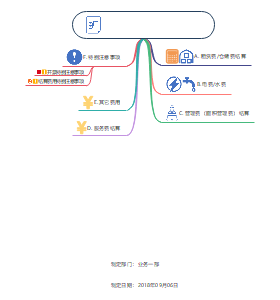导图社区 审计计划
- 101
- 2
- 1
- 举报
审计计划
2024注会审计第二章,本章属于比较重要的章节,考试时可以各种题型进行考核。客观题主要考核初步业务活动、重要性等相关内容;主观题中经常将审计计划的内容作为综合题的一部分进行考核。本章近几年平均分值在6分左右。2023年考核了单选题和多选题。
编辑于2024-02-20 10:46:51- 注会审计
- 2024cpa会计科目第17章收入、费用和利润
2024cpa会计科目第17章,本章属于非常重要的章节,其内容知识点多、综合性强,可以各种题型进行考核。既可以单独进行考核客观题和主观题,也可以与前期差错更正、资产负债表日后事项等内容相结合在主观题中进行考核。2018年、2020年、2021年、2022年均在主观题中进行考核,近几年平均分值 11分左右。
- 2024cpa会计科目第十二章或有事项
2024cpa会计科目第十二章,本章内容可以各种题型进行考核。客观题主要考核或有资产和或有负债的相关概念、亏损合同的处理原则、预计负债最佳估计数的确定、与产品质量保证相关的预计负债的确认、与重组有关的直接支出的判断等;同时,本章内容(如:未决诉讼)可与资产负债表日后事项、差错更正等内容相结合、产品质量保证与收入相结合在主观题中进行考核。近几年考试平均分值为2分左右。
- 2024cpa会计科目第十一章借款费用
2024cpa会计科目第十一章,本章属于比较重要的章节,考试时多以单选题和多选题等客观题形式进行考核,也可以与应付债券(包括可转换公司债券)、外币业务等相关知识结合在主观题中进行考核。重点掌握借款费用的范围、资本化的条件及借款费用资本化金额的计量,近几年考试分值为3分左右。
审计计划
社区模板帮助中心,点此进入>>
- 2024cpa会计科目第17章收入、费用和利润
2024cpa会计科目第17章,本章属于非常重要的章节,其内容知识点多、综合性强,可以各种题型进行考核。既可以单独进行考核客观题和主观题,也可以与前期差错更正、资产负债表日后事项等内容相结合在主观题中进行考核。2018年、2020年、2021年、2022年均在主观题中进行考核,近几年平均分值 11分左右。
- 2024cpa会计科目第十二章或有事项
2024cpa会计科目第十二章,本章内容可以各种题型进行考核。客观题主要考核或有资产和或有负债的相关概念、亏损合同的处理原则、预计负债最佳估计数的确定、与产品质量保证相关的预计负债的确认、与重组有关的直接支出的判断等;同时,本章内容(如:未决诉讼)可与资产负债表日后事项、差错更正等内容相结合、产品质量保证与收入相结合在主观题中进行考核。近几年考试平均分值为2分左右。
- 2024cpa会计科目第十一章借款费用
2024cpa会计科目第十一章,本章属于比较重要的章节,考试时多以单选题和多选题等客观题形式进行考核,也可以与应付债券(包括可转换公司债券)、外币业务等相关知识结合在主观题中进行考核。重点掌握借款费用的范围、资本化的条件及借款费用资本化金额的计量,近几年考试分值为3分左右。
- 相似推荐
- 大纲
审计计划
初步业务活动
计划审计工作的基本要求和内容框架
基本要求:计划审计工作是一项持续的过程,通常注册会计师在前一期审计工作结束后即开始开展本期的审计计划工作,直到本期审计工作结束为止
内容框架
进行初步业务活动
制定总体审计策略
制定具体审计计划
初步业务活动的目的和内容
目的(承接、保持)
具备执行业务所需要的独立性和能力
不存在因管理层诚信问题而可能影响注册会计师保持该项业务意愿的情况
与被审计单位不存在对业务约定条款的误解
内容
针对保持客户关系和具体审计业务实施相应的质量管理程序
评价遵守相关职业道德要求的情况
就审计业务约定条款达成一致意见
审计的前提条件
含义:被审计单位管理层在编制财务报表时采用可接受的财务报告编制基础,以及管理层对注册会计师执行审计工作的前提的认可
具体内容
财务报告编制基础的可接受性
被审计单位的性质
财务报表的目的
财务报表的性质
法律法规是否规定了适用的财务报告编制基础
管理层已认可并理解其承担的责任
确认的形式--书面声明
如果管理层不认可其责任,或不同意提供书面声明,注册会计师将视为不能获取充分、适当的审计证据。在这种情况下,注册会计师承接此类审计业务是不恰当的,除非法律法规另有规定
如果法律法规要求承接此类审计业务,注册会计师可能需要向管理层解释这种情况的重要性及其对审计报告的影响
审计业务约定书
基本原则:会计师事务所承接任何审计业务,都应与被审计单位签订审计业务约定书
基本内容
财务报表审计的目标与范围
注册会计师和管理层的责任
指出用于编制财务报表所适用的财务报告编制基础
提及注册会计师拟出具的审计报告的预期形式和内容,以及对在特定情况下出具的审计报告可能不同于预期形式和内容的说明
特殊考虑
考虑特定需要(主要:双方的义务问题)
由于审计和内部控制的固有限制,即使审计工作按照审计准则的规定得到恰当的计划和执行,仍不可避免地存在某些重大错报未被发现的风险
预期管理层将提供书面声明
收费的计算基础和收费安排
组成部分的审计:如果母公司的注册会计师同时也是组成部分注册会计师,需要考虑下列因素,决定是否向组成部分单独致送审计业务约定书
组成部分注册会计师的委托人(委托人不同,一般单独致送)
是否对组成部分单独出具审计报告
与审计委托相关的法律法规的规定
母公司占组成部分的所有权份额(份额不高,一般说明组成部分的独立性高,应单独致送)
组成部分管理层相对于母公司的独立程度(独立程度越高,越应单独致送)
连续审计
基本要求
是否需要对审计业务约定条款作出修改
是否需要提醒被审计单位注意现有的条款
可以决定不在每期都致送新的审计业务约定书或其他书面协议
可能导致修改审计业务约定条款/提醒注意现有条款的情形(除了6和8,其他都是和被审计单位有关)
有迹象表明被审计单位误解审计目标和范围
需要修改约定条款或增加特别条款
被审计单位高级管理人员近期发生变动
被审计单位所有权发生重大变动
被审计单位业务的性质或规模发生重大变化(影响风险和收费)
法律法规的规定发生变化
编制财务报表采用的财务报告编制基础发生变更
其他报告要求发生变化
审计业务约定条款的变更
基本要求:在完成审计业务前,如果被审计单位或委托人要求将审计业务变更为保证程度较低的业务,注册会计师应当确定是否存在合理理由予以变更
变更原因
合理理由
环境变化对审计服务的需求产生影响(e.g.,暂停IPO审批)
对原来要求的审计业务的性质存在误解
非合理理由:无论是管理层施加的还是其他情况引起的审计范围受到限制
如果有迹象表明该变更要求与错误的、不完整的或者不能令人满意的信息有关,注册会计师不应认为该变更是合理的
处理原则
如果没有合理的理由,注册会计师不应同意变更业务
如果注册会计师不同意变更审计业务约定条款,而管理层又不允许继续执行原审计业务,注册会计师应当
在适用的法律法规允许的情况下,解除审计业务约定
确定是否有约定义务或其他义务向治理层、所有者或监管机构等报告该事项(向有关机构报告)
总体审计策略和具体审计计划
总体审计策略
概述:用以确定审计范围、时间安排和方向,并指导制定具体审计计划
制定总体审计策略时考虑的主要事项
审计范围
报告目标、时间安排及所需沟通的性质
审计方向
重要性
为计划目的确定重要性
为组成部分确定重要性且与组成部分的注册会计师沟通
在审计过程中重新考虑重要性
识别重要的组成部分和账户余额
评估的财务报表层次的重大错报风险对指导、监督及复核的影响
如何向项目组成员强调在收集和评价审计证据过程中保持职业怀疑的必要性
审计资源
向具体审计领域调配的资源,包括向高风险领域分派有适当经验的项目组成员,就复杂的问题利用专家工作等
向具体审计领域分配资源的多少,包括分派到重要地点进行存货监盘的项目组成员的人数,在集团审计中复核组成部分注册会计师工作的范围,向高风险领域分配的审计时间预算等
何时调配这些资源,包括是在期中审计阶段还是在关键的截止日期调配资源等
如何管理、指导、监督这些资源,包括预期何时召开项目组预备会和总结会,预期项目合伙人和经理如何进行复核,是否需要实施项目质量复核等
具体审计计划(“总体”指导“具体”的制定)
核心:确定审计程序的性质、时间安排和范围(目的:合理保证--审计风险降至可接受的低水平)
内容
风险评估程序:为了充分识别和评估财务报表重大错报风险,注册会计师计划实施的风险评估程序的性质、时间安排和范围
进一步审计程序(认定层次)
包括控制测试和实质性程序
两个层次
总体方案【包括:综合性方案和实质性方案】
具体审计程序【控制测试和实质性程序的性质、时间安排和范围)
其他审计程序,如:期后事项、或有事项、持续经营、对法律法规的考虑、关联方和舞弊等
审计过程中对计划的更改
计划审计工作并非审计业务的一个孤立阶段,而是一个持续的、不断修正的过程,贯穿于整个审计业务的始终
如果注册会计师在审计过程中对总体审计策略或具体审计计划作出重大修改,应当在审计工作底稿中记录作出的重大修改及其理由
指导、监督与复核(考虑因素)
被审计单位的规模和复杂程度
审计领域
评估的重大错报风险(主要因素)
执行审计工作的项目组成员的专业素质和胜任能力
重要性
重要性的概念
重要性的含义
如果合理预期错报(包括漏报)单独或汇总起来可能影响财务报表使用者依据财务报表作出的经济决策,则通常认为错报是重大的
对重要性的判断是根据具体环境作出的,并受错报的金额或者性质的影响,或受到两者的共同影响(CPA:适当的职业判断)
判断某事项对财务报表使用者是否重大,是在考虑财务报表使用者整体共同的财务信息需求的基础上作出的
对重要性含义的理解
财务报表错报包括金额、披露两方面的错报
重要性可以理解为可容忍的错报程度
判断某项错报对财务报表使用者影响是否重大,不考虑错报对个别财务报表使用者可能产生的影响
重要性确定包括财务报表整体的重要性和特定类别交易、账户余额和披露的重要性水平
运用重要性水平的审计环节
计划阶段(总体):确定重要性水平
执行审计阶段:运用重要性水平(实际执行)
形成结论阶段:确定报告类型
在计划和执行审计工作,评价识别出的错报对审计的影响,以及未更正错报对财务报表和审计意见的影响时,注册会计师需要运用重要性概念
在计划审计工作时对何种情形构成重大错报作出的判断,为下列方面提供了基础
确定风险评估程序的性质、时间安排和范围
识别和评估重大错报风险
确定进一步审计程序的性质、时间安排和范围
在整个业务过程中,随着审计工作的进展,注册会计师应当根据所获得的新信息更新重要性
重要性水平与审计证据的数量呈反向关系
重要性的确定及应用原则
在制定总体审计策略时,注册会计师就必须对重大错报的金额和性质作出一个判断,包括确定财务报表整体的重要性水平和适用于特定类别交易、账户余额和披露的一个或多个的重要性水平
当错报金额高于整体重要性水平时,就很可能被合理预期将对使用者根据财务报表作出的经济决策产生影响
注册会计师还应当确定实际执行的重要性,以评估重大错报风险并确定进一步审计程序的性质、时间安排和范围
在整个业务过程中,随着审计工作的进展,注册会计师应当根据所获得的新信息更新重要性,并考虑进一步审计程序是否仍然适当
在形成审计结论阶段,要使用整体重要性水平和为了特定交易类别、账户余额和披露而确定的较低金额的重要性水平来评价
已识别的错报对财务报表的影响
对审计报告中审计意见的影响
重要性水平的确定
考虑因素
对被审计单位及其环境等方面情况的了解
财务报表各项目的性质及其相互关系
财务报表项目的金额及其波动幅度
财务报表整体的重要性水平(影响财务报表使用者经济决策的临界值)
基本概述
制定阶段:注册会计师在制定总体审计策略时,应当确定财务报表整体的重要性
基本模型:财务报表整体的重要性水平=基准×百分比
考虑因素
财务报表要素(如资产、负债、所有者权益、收入和费用)
是否存在特定会计主体的财务报表使用者特别关注的财务报表项目
被审计单位的性质、所处的生命周期阶段以及所处行业和经济环境
被审计单位的所有权结构和融资方式(如:债务融资、权益融资)
基准的相对波动性
相关说明:注册会计师选定基准时需要考虑的是基准的相对波动性,而不是基准的重大错报风险
重要性的具体确认原则
确定基准
通常情况:对于以营利为目的的企业,以经常性业务的税前利润作为基准
特殊情况(例如企业处于微利或微亏状态时,注册会计师可以考虑采用以下方法确定基准(二选一)
如果微利或微亏状态是由.宏观经济环境的波动或企业自身经营的周期性所导致,可以考虑采用过去 3-5年经常性业务的平均税前利润作为基准
采用财务报表使用者关注的其他财务指标作为基准,如营业收入、总资产等
就选定的基准而言,相关的财务数据通常包括
前期财务成果和财务状况
本期最新的财务成果和财务状况
本期的预算和预测结果
需要根据被审计单位情况的重大变化(如重大的企业并购)和被审计单位所处行业和经济环境情况的相关变化等作出调整
提示
如果被审计单位的经营规模较上年度没有重大变化,通常使用替代性基准确定的重要性不宜超过上年度的重要性
注册会计师为被审计单位选择的基准在各年度中通常会保持稳定,但是并非必须保持一贯不变注册会计师可以根据经济形势、行业状况和被审计单位具体情况的变化对采用的基准作出调整
确定百分比
基本要求
为选定的基准确定百分比需要运用职业判断【可高可低、适合具体情况】
基准与百分比一般呈反向关系【如经常性业务的税前利润对应的百分比通常比营业收入对应的百分比要高】
考虑因素
被审计单位是否为上市公司或公众利益实体
财务报表使用者的范围(是否分发给广大范围的使用者)
被审计单位是否由集团内部关联方提供融资或是否有大额对外融资(如债券或银行贷款)
财务报表使用者是否对基准数据特别敏感(如:特殊目的财务报表的使用者)
注册会计师在确定重要性水平时,不需考虑与具体项目计量相关的固有不确定性。例如,涉及含有高度估计不确定性的大额会计估计
特定类别交易、账户余额或披露的重要性水平
确定特定类别重要性的必要性:根据被审计单位的特定情况,如果存在一个或多个特定类别的交易、账户余额或披露,其发生的错金额虽然低于财务报表整体的重要性,但合理预期将影响财务报表使用者依据财务报表作出的乡济决策,则注册会计师还应当确定适合于这些特定类别的交易、账户余额或披露的重要性水平
确定特定类别重要性时应考虑的影响因素
实际执行的重要性
含义及考虑因素
含义
财务报表整体:是指注册会计师确定的低于财务报表整体的重要性的一个或多个金额,旨在将未更正和未发现错报的汇总数超过财务报表整体的重要性的可能性降至适当的低水平
特定类别:是指注册会计师确定的低于特定类别的交易、账户余额或披露的重要性水平的个或多个金额【如果适用】
考虑因素
对被审计单位的了解(在实施风险评估程序的过程中得到更新)
前期审计工作中识别出的错报的性质和范围
根据前期识别出的错报对本期错报作出的预期
确定原则
通常而言,实际执行的重要性通常为财务报表整体重要性的 50%-75%
注册会计师无须通过将财务报表整体的重要性平均分配或按比例分配至各个报表项目的方法来确定实际执行的重要性,而是根据以前期间的审计经验和本期审计计划阶段的风险评估结果,确定如何确定一个或多个实际执行的重要性
审计过程中修改重要性
基本要求:注册会计师可能需要修改
财务报表整体的重要性
特定类别的交易、账户余额或披露的重要性水平(如适用)
修改原因
审计过程中情况发生重大变化(如决定处置被审计单位的一个重要组成部分)
获取新信息
通过实施进一步审计程序,注册会计师对被审计单位及其经营的了解发生变化
在审计中运用实际执行的重要性(2个作用)
确定需要实施审计程序的对象
通常情况:注册会计师在计划审计工作时,可以根据实际执行的重要性确定需要对哪些类型的交易、账户余额和披露实施进一步审计程序,即通常选取金额超过实际执行的重要性的财务报表项目,因为这些财务报表项目有可能导致财务报表出现重大错报
特殊情况:注册会计师需要对部分金额低于实际执行的重要性的财务报表项目实施进一步审计程序,这主要出于以下考虑
单个金额低于实际执行的重要性的财务报表项目汇总起来可能金额重大(可能远远超过财务报表整体的重要性),注册会计师需要考虑汇总后的潜在错报风险
对于存在低估风险和识别出存在舞弊风险的财务报表项目,不能仅仅因为其金额低于实际执行的重要性而不实施进一步审计程序
运用实际执行的重要性确定进一步审计程序的性质、时间安排和范围
实施实质性分析程序时:注册会计师确定的已记录金额与预期值之间的可接受差异额通常不超过实际执行的重要性
运用审计抽样实施细节测试时:注册会计师可以将可容忍错报的金额设定为等于或低于实际执行的重要性
错报
错报的概念
含义
某一财务报表项目的金额、分类或列报,与按照适用的财务报告编制基础应当列示的金额、分类或列报之间存在的差异
根据注册会计师的判断,为使财务报表在所有重大方面实现合法、公允反映,,需要对金额、分类或列报作出的必要调整
来源:舞弊或错误
导致原因
收集或处理用以编制财务报表的数据时出现错误
遗漏某项金额或披露,包括不充分或不完整的披露,以及为满足特定财务报告编制基础的披露目标而被要求作出的披露(如适用)
由于疏忽或明显误解有关事实导致作出不正确的会计估计
注册会计师认为管理层对会计估计作出不合理的判断或对会计政策作出不恰当的选择和运用
信息的分类、汇总或分解不恰当
累积识别出的错报
明显微小错报
审计要求
注册会计师可能将低于某一金额的错报界定为明显微小的错报,对这类错报不需要累积,因为注册会计师认为这些错报的汇总数明显不会对财务报表产生重大影响
“明显微小”不等同于“不重大”。明显微小错报的金额的数量级,与按照审计准则的相关规定确定的重要性的数量级相比,是完全不同的(显微小错报的数量级更小,或其性质完全不同)
这些明显微小的错报,无论单独或者汇总起来,无论从金额、性质或其发生的环境来看都是明显微不足道的
如果不确定一个或多个错报是否明显微小,就不能认为这些错报是明显微小的
注册会计师需要在制定审计策略和审计计划时,确定一个明显微小错报的临界值,低于该临界值的错报视为明显微小的错报,可以不累积
注册会计师应当在审计工作底稿中记录设定的明显微小错报临界值
确定原则
一般情况
.明显微小错报的临界值确定为财务报表整体重要性的 3%~5%(可高可低)
通常不超过财务报表整体重要性的 10%
特殊情况:除非注册会计师认为有必要单独为重分类错报(可能更宽容并非必须)确定一个更高的临界值
考虑因素
以前年度审计中识别出的错报(包括已更正和未更正错报)的数量和金额
重大错报风险的评估结果
被审计单位治理层和管理层对注册会计师与其沟通错报的期望
被审计单位的财务指标是否勉强达到监管机构的要求或投资者的期望
对上述因素的考虑,实际上是在确定审计过程中对错报的过滤程度,目标是要确保不累积的错报连同累积的未更正错报不会汇总成为重大错报
错报的分类
事实错报
判断错报
定义:注册会计师认为管理层对财务报表中的确认、计量和列报(包括对会计政策的选择或运用)作出不合理或不恰当的判断而导致的差异
产生情况
管理层和注册会计师对会计估计值的判断差异
管理层和注册会计师对选择和运用会计政策的判断差异
推断错报:通常是指通过测试样本估计出的总体的错报减去在测试中发现的已经识别的具体错报
对审计过程识别出的错报的考虑
错报可能不会孤立发生,一项错报的发生还可能表明存在其他错报
抽样风险和非抽样风险可能导致某些错报未被发现
审计过程中累积错报的汇总数接近确定的重要性,则表明存在比可接受的低风险水平更大的风险,即可能未被发现的错报连同审计过程中累积错报的汇总数,可能超过重要性









